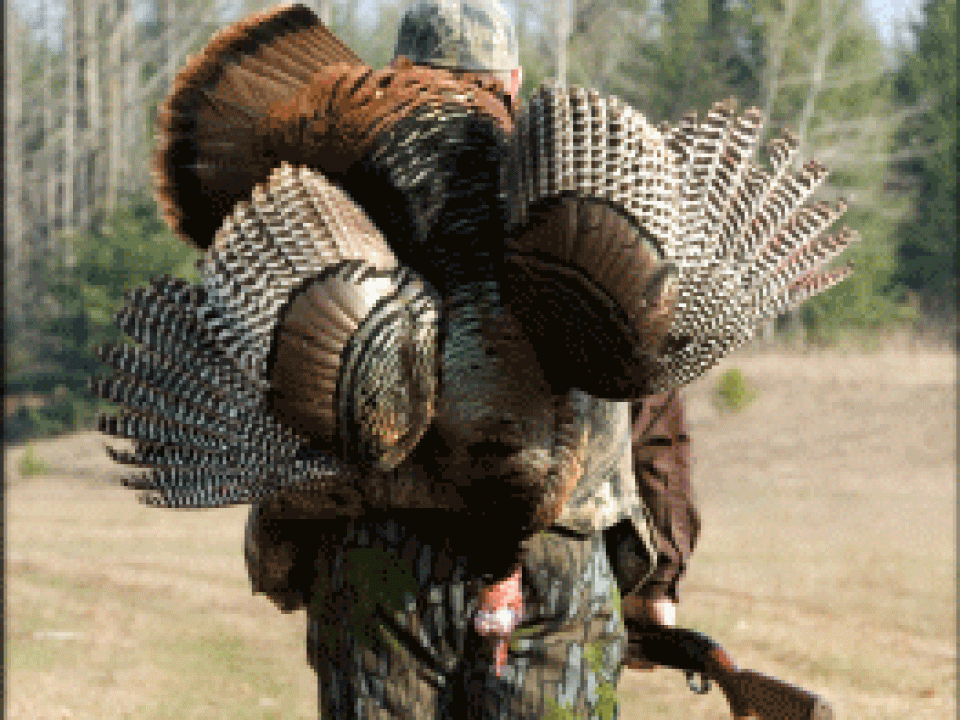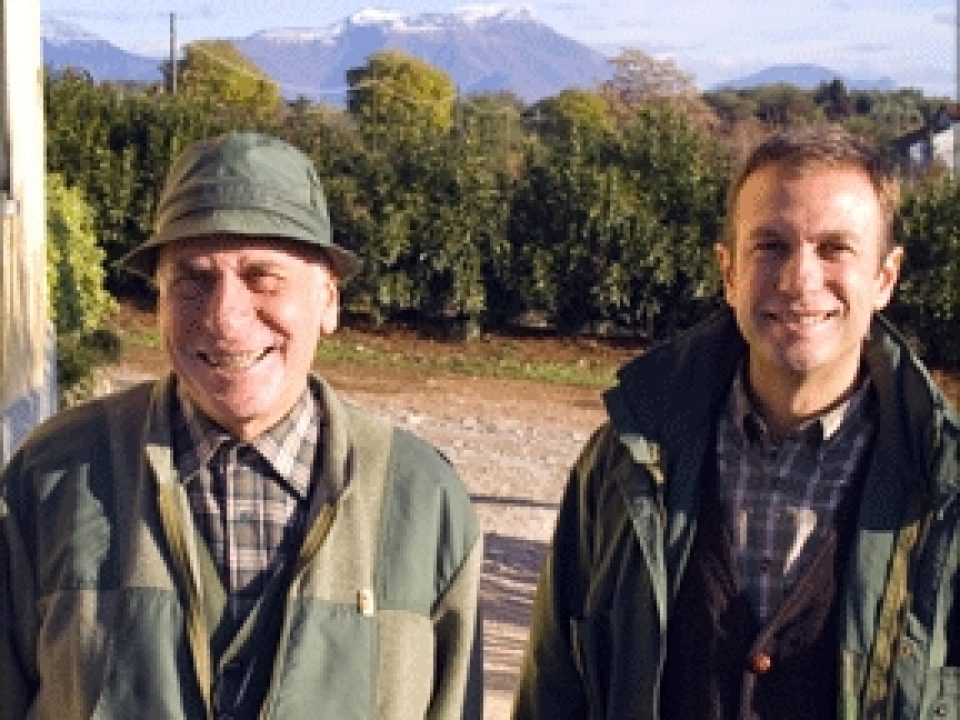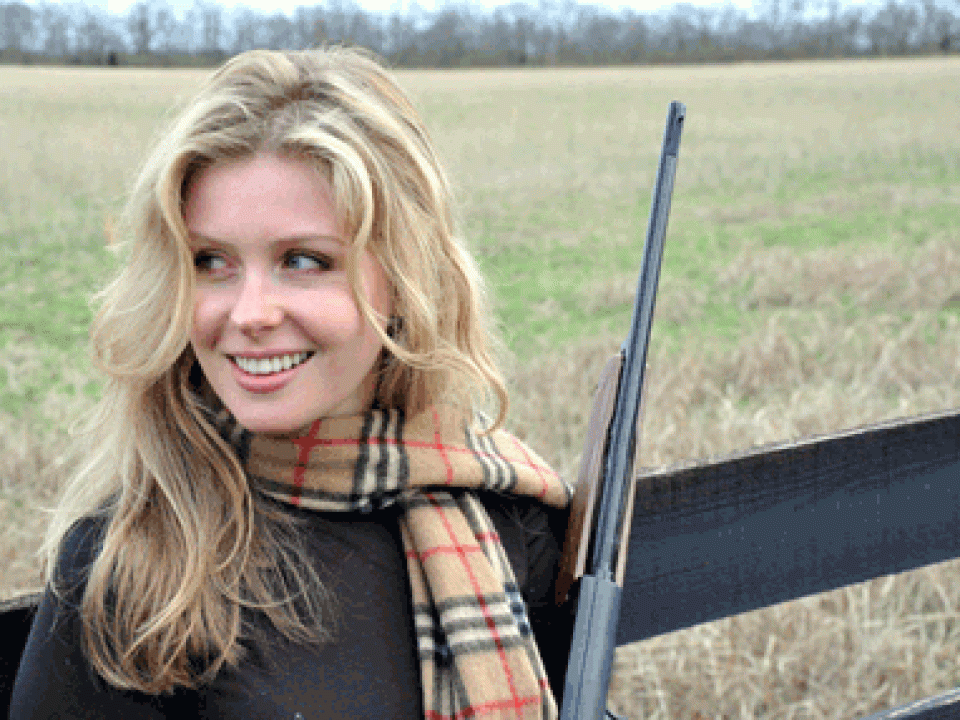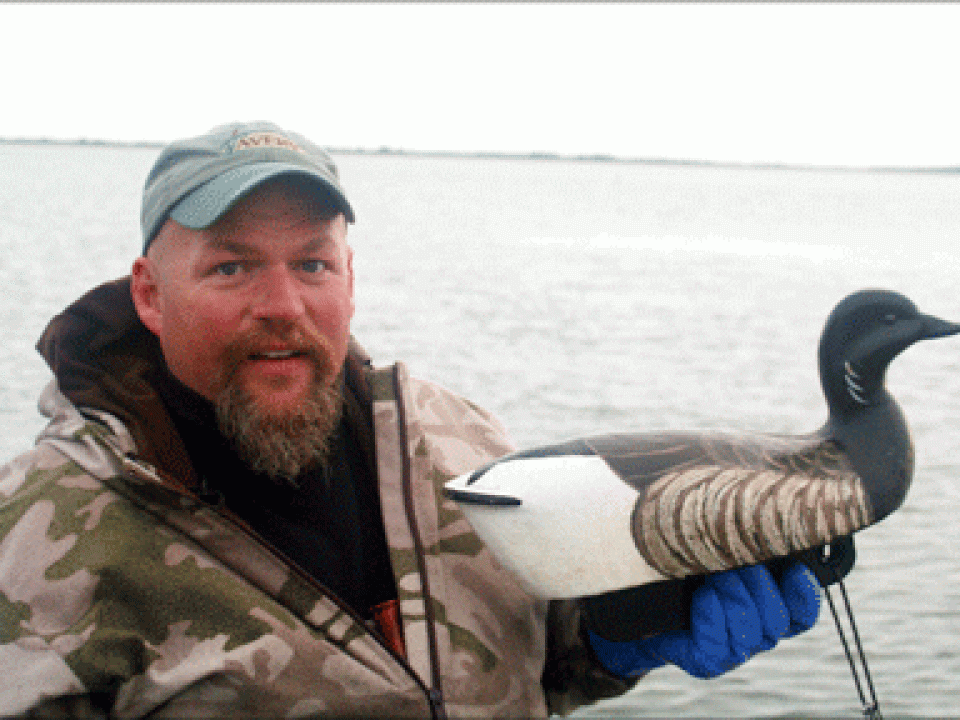The middle Tennessee hills are a hidden treasure of superb quail hunting habitat.
shotguns
The “Un”-Magnum Approach to Turkeys
In anticipation of the upcoming turkey season, I’m sure most of you have noticed that outdoor print media and television airwaves are filled with scene after scene of toms getting annihilated by 12-gauge and 10-gauge shotguns spewing magnum loads, and the advertisements in between the pages and during the commercial breaks are filled with supercallifragilistic, triple-Xtra, super-duper magnum this, that, and the other. Sheesh, you’d think a turkey had the armor plating of a rhinoceros, rather than a coat of feathers.
Part of the problem has been that the bigger-is-always-better approach has long defined the mindset of more than a few Americans. We’ve seen that philosophy exacerbated in more than a few areas. Take, for instance, the ever-increasing size of our SUVs and trucks. Remember when a Toyota Tundra was the size the
I hate to say it, but the gun industry has followed suit. Think of all the Super Short Magnums that have come on the market in the last decade or so. There was a resurgence of the 10-gauge in recent years, too. Even the archery side of things has its extremes. When I was working at the NRA, we never talked about someone in print claiming to make a clean kill shot on game at more than 40 yards. Yet today, there’s more than a few hardcore archers who know their equipment and have solid skills and will tell you they regularly kill at up to 80 yards (I don’t know, maybe the braggings gotten bigger, too). Still, one of the segments that pushes excess the hardest are the purveyors of guns and ammunition designed particularly for killing turkeys.
I get it, it’s marketing. Kill it further out! Kill it faster! Kill it deader than dead! Now, I’m all for a fast kill, and I have seen where advancing ammunition technology really does result in a faster kill. I remember when some of Federal’s first tungsten shotshells came out, for instance. I took those loads goose hunting, and without question saw a better quality, faster kill than I did with steel shot (airborne geese hit with those loads responded like a bug hitting your car windshield as you cruise down the highway—they never knew what hit them). But I haven’t seen the same results with turkeys. The push for 3 ½-inch 12- and 10-gauge shells that can reach out and tag a tom at 50 or 60 yards is fine in and of itself, but in my opinion it’s unnecessary. I’ll tell you why.
Ask yourself this: are turkeys harder to kill now than they were 20 years ago? No. Do you need to kill a turkey at 60 yards? No. Do you need the recoil of a long-shelled 12- or a 10-gauge bruising your shoulder and cheek? Still nope.
Let me break those questions down for you a little better. The first one is simple enough.
How about the need to kill a turkey at 50 or 60 yards? “Need” being a relative term, I’d say that, if you find yourself shooting toms as distances much farther out than you ever used to, you need to practice your calling and decoying skills. Yes, turkeys hang up. No, sometimes they can’t be worked closer. Live hens compete with your fakery for a tom’s attention and love and often wins. Crows distract and confuse. That is the romance that is hunting – hunting – this game bird. You have six weeks and one or two tags. I’d rather spend several beautiful spring mornings watching the sun come up and call a gobbler in the right way and close enough for an instant-death, one-shot kill, than plunk a tom down way in the distance on opening day (or any day, for that matter) just because the shot string from my gun reached that far. Just because you can doesn’t mean you should.
Finally, recoil is absolutely an issue with 12- and 10-gauge shotguns loaded with 3½-inch shells. I know some of you are thinking “Heck, it’s just one, maybe two shots.” But it’s not. You have time on the bench with different chokes and dozens of shells shucked through your gun, if you’re responsible about patterning a shotgun you intend to kill live game with – and if you intend to kill a thickly feathered 20-pound or better bird at 60 yards, you damn well better perfect your gun on paper before you head for the field.
But if you spend the time on the bench that you should, the chances are you’re going to start to flinch, especially if you conventionally and regularly shoot shotguns with less strength. I don’t care how tough you are, how much testosterone courses through you, and how big your truck is, this is physics, and hard-recoiling guns, most often those shot infrequently, do things to you mentally and physically.
Even worse than a flinch, though, is your shot-to-shot recovery. Remember you were thinking “one, maybe two” shots? If you’re going to shoot at distance, the faster a suddenly necessary secondary shot comes the better, and speed in getting the bead or scope back on target following the muzzle rise from the first shot is compromised when you increase the load.
Need one more reason? I’m going back to the how-tough-you-are argument. Plain and simple, there isn’t anything pleasurable about the recoil from these guns. If you say there is, okay for you, but I think that qualifies you as a masochist, and that’s not an attractive trait no matter how you slice it.
If you’re still not convinced, I’d tell you to go back to watching all the turkey hunting shows on TV. Notice the abundance of youth hunts filmed? Take a look at what all those kids are shooting. It’s the 20-gauge. That’s right, the no-notoriety, lil’ ol’ yellow-hulled 20-gauge. Notice anything else? These kids and their small shotguns kill turkeys just fine, especially when an adult with calling skills and hunting skills has called one in close enough. (Get it? Called. In. Close. Enough.) So if the lowly 20-gauge is good enough for your kids to kill a gobbler with, why do you need to buy into the magnum hype?
I say don’t. Personally, I often carry a 12-gauge auto, an older Browning Gold I’ve owned for some time. It’s super easy on recoil, even with a stiff turkey load, but when I go after gobblers I load it with either 2¾- or 3-inch loads, not the 3½. I don’t need the bigger shell. Maybe more often than I take out the Browning, though, I have a little Beretta White Onyx over/under in 20-gauge that’s my favored tool for turkeys. It’s more maneuverable, fast to reload, accurate as any other shotgun when patterned correctly, and easy to carry if I have to do some hiking for a tom. And it kills just fine.
Try it, try something smaller, like the 20-gauge your kids are hunting with. Resist the temptation to up the distance at which you kill. Resist the marketing hype that bigger is better just because it’s bigger and work on what really should be better, and that is your scouting, calling, and setup techniques. It’s okay to be a magnum hunter, just do it without the magnum gun.
Jennifer L.S. Pearsall is a professional outdoor writer, photographer, and editor, who has been a part of the hunting and shooting industries for nearly 20 years. She is an avid clays shooter, hunter and dog trainer. Please visit her blog “Hunting the Truth” at http://huntingthetruth.com.
Arzaga Drugulo: Hunting With the Zoli Family at Italy’s Oldest Club
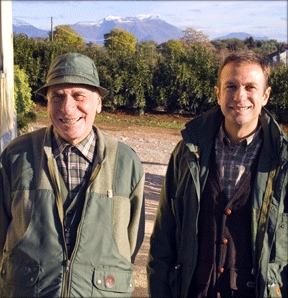
“We’re not in Kansas anymore, Toto!” I said to Steve Lamboy as we left the small home that serves as the clubhouse for the Arzaga Drugulo hunting club. Steve and I were guests of Paolo Zoli and his father, Giuseppe Zoli, owners of the preeminent gunmaker Antonio Zoli located in the center of Italy’s historic arms producing region, Gardone Val Trompia.
Grey Cliffs Ranch
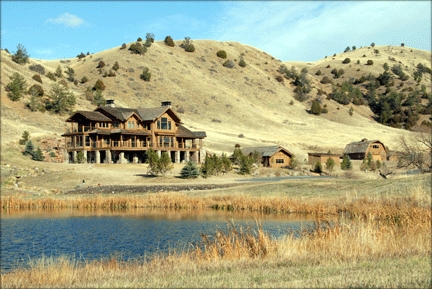 The Gray Cliffs Ranch Lodge[/caption]
The Gray Cliffs Ranch Lodge[/caption]It was one of Montana’s best-kept secrets nestled away in the hill country along the Madison River. The ranch opened to the public back in 2007, but it didn’t hold its grand opening until early 2008 when all the finishing touches were completed. The ranch is a 5000 acre deeded property with about an additional 2000 acres in leased land. Some of the land, only about 1,500 acres, is farmed but the majority of it is in a natural state for wildlife.
In Love With A Belgian
I wasn’t doing much of anything with my life, when I met Mark. I was working on the back end of the construction trade, first as a secretary for a plumbing supply wholesaler, then doing customer service for a cabinet supplier. The Washington metro area had been in one of its housing booms, but, in what is now an eerie specter of the housing bust (though certainly for different reasons then), the market collapsed. The cabinet company I was working for fired me—I knew where all the skeletons were—then bounced my final paycheck and filed for bankruptcy the next day.
I was out of a job, but I was in my mid-twenties, had a boyfriend I was kind of sharing most of my days and nights with, and I quickly found a part-time gig. My small number of bills were mostly paid, and I figured something would come along, so I didn’t even worry about the whole out-of-work thing that much. It was actually kind of a relief after the stress of watching the company I’d work for tank underneath me.
Mark had owned and sold a company, and he was doing some consulting work on the side, so we had a lot of time to just knock around. Weekends, though, were reserved for gun shows.
Northern Virginia has a rotating circuit of gun shows, or at least it did at the time. There was one in Leesburg one weekend, followed by another in Hume, one down past
There were always dealers with really, really, nice guns at that show, and I, having at least part of the personality of the crow and liking bright shiny things, appreciated the collections of Browning Hi-Powers laid out on red velvet, or a grouping of pearl-handled Colt Single Action Army’s under a glass case. My personal interests were really leaning toward rifles and shotguns though, and there were two dealers in particular who had my number dialed in.
The first had this unbelievable collection of Colt sporting rifles. Manufactured in a joint effort with Sauer for just a dozen years (1973 to 1985, to be exact), they all had gorgeous wood and a raised cheek piece that I loved to press against my face. In fact, they looked a lot like (no surprise here) the Weatherbys my grandfather Evans kept in his gun rack above his desk in
But it was the bluing on the Colt Sauer rifles that always got to me. No other rifle then or now, at least in my eyes, has ever possessed a bluing job like those guns did. It was deep and colorfull, truly blue, but also black-blue, and blue-purple, and black-green, a melding of all the colors of oil floating on water. To this day the depth of that bluing sticks in my head like a photo, and I’ve never seen another gun, long or short, that carried a bluing job anywhere near as beautiful as those Colt Sauers did. I coveted those rifles, but the dealer had tags on all of them that said $1,200 or $1,500. They were well out of my price range.

(Photo courtesy of Connecticut Shotgun Manufacturing Co.)
The second dealer I gravitated toward was an elderly gentleman who specialized in Belgian Browning shotguns. He had quite a few, never less than ten or a dozen at any show, and all were in pristine condition. I admired all of the Browning’s that man brokered, had done a little reading on Browning’s history, and so when the dealer had an A-5 at one show, it caught my attention.
That gun was as unmarred as one could hope. Not a scratch dinged the gun’s lovely rectangular receiver or its light scroll engraving, no wear showed at the pull-back bolt or thumb button or trigger tang or trigger guard. Not even the muzzle had any dulling –
clearly, this gun had been handled with care and laid in a case, not shoved in and out of a slip. The butt pad, too, was original and was still soft and pliable; not a bit of dry rot had begun. The grip of mellow, softly yellow wood was squared at the bottom and fit perfectly in my right hand. The fore-arm, sculpted a bit where it rounded in to meet and grip the barrel, seemed to have been designed to lay my thumb against it on one side and grip lightly on the other with my finger tips. That it was a little long in the stock didn’t bother me at all (though I don’t think I knew enough at the time to realize it didn’t really fit at all). I could look straight down its low-profile vented rib to c
I went home with that 32-inch-barreled, fixed full choke, Belgian Browning A-5.
I shot that gun often the first year I had it. I knew what it was intended for, with that long, tight barrel, and that was waterfowling. Or it least that was what it was designed for before steel shot forced out the use of lead. But I found an alternate use for it. Trap seemed to be that gun’s second calling. Oh, I had a little trouble with the rings and light loads sometimes, but once I had the right combination figured out, I mastered that clay bird game quickly. The 32-inch barrel seemed barely to move, as I pushed the muzzle in front of those going-away birds, and the straight line I had over that famed hump-backed receiver and down the rib to the bead was trap shooters who spend a lot of money customizing a gun yearn for. I was good for strong runs of targets way back in the handicap lines some nights.
The Browning was more or less retired after I owned it for the first year. I’d moved on to skeet, having grown bored with trap, and for this new clay sport, the long, full-choked barrel was sorely disadvantaged. And so it sat in my gun closet, cleaned and polished, for several years. I missed it, for like anything you’ve loved but lost your way with, it had that distinctive and piquant blend of fresh experience and nostalgia. But the truth was, I’d outgrown it.
I took that sweet Browning out one day, looked at its still gleaming metal and wood, took a breath of the Hoppe’s that still remained somewhere in its parts—and then I slipped it back in its case and took it to the local gun store to sell it. I didn’t “need” the gun, hadn’t used it in a long while. I reasoned that cash was better than a gun taking up space in a closet. It wasn’t. I’ve sold a small fraction of the guns I’ve ever owned. That Browning was the first I parted ways with, and the one I regret the most. First loves are like that.
Jennifer L.S. Pearsall is a professional outdoor writer, photographer, and editor, who has been a part of the hunting and shooting industries for nearly 20 years. She is an avid clays shooter, hunter and dog trainer. Please visit her blog “Hunting the Truth” at http://huntingthetruth.com.
Beauty and the Beast
Georgia Pellegrini stands at the crossroads of the Upper East Side in Manhattan and the Lazy Triple Creek Ranch in the Big Hole Mountains of Idaho.
A Harvard and Wellesley alum, she takes to the fields with a 20-gauge shotgun ready to bag any game bird, as part of her quest to fuse hunting with haute cuisine.
One prong of her culinary mission is to upend the metropolitan revulsion of fresh-killed ingredients taken by thine own hand. Grass-fed buffalo from New York’s Ottomanelli’s Butcher Shoppe is splendid, but if you really want to sit down to some real, honest meat Georgia suggests you start with buying a shotgun and a box of shells.
Of the 13 million American women with the ability to show off a freezer full of elk and venison that they personally harvested, it’s Georgia’s contradictions that make her unique in the tribe of female hunters.
A former cubicle dweller with Lehman Brothers, which was vilified for sparking the mortgage meltdown, Georgia now devotes her life to the little guy – the mavericks who live off the grid hand-crafting artisanal foods.
While strangers expect to find her strutting the runway in Alexander McQueen and Jimmy Choo, you’re more likely to find her shooting over dogs in Filson and Le Chameau.
And her role of chef-as-hunter forges a new media spectrum currently neglected by the likes of The Food Network, the Outdoor Channel and the Today Show.
From her unique cultural junction, we can expect Georgia to rally the next wave in the locavore movement here in the U.S. Started in Europe, the strict interpretation of locavore cuisine demands food culled within earshot of the village church bell. In countries such as Italy and France, the audible perimeter virtually ensures food untouched by the maws of industrial farming and slaughterhouse assembly lines.
You can savor locavore dining today in white-table-cloth restaurants devoted to the daily, backdoor delivery of regional ingredients. Georgia, meanwhile, is adding pride of the pursuit into the locavore movement by hunting the meat herself – and advocating the same sense of duty by fellow carnivores. For hunters who spend half the year in camo, there are no surprises here. But the sudden revelation of this Ivy League stunner slitting the throat of a fresh Tom can render a Jean-Paul Gaultier fashionista wickedly speechless.
Armed with her trusty CZ 20-gauge, Georgia has taken her fair share of quail, dove and turkey in a quest for the freshest fare. Give her a rifle and she’ll track down a hog for a savory repast reminiscent of Sunday suppers at grandma’s.
“So many chefs are focused on food pyrotechnics and the food often suffers as a result,” she said. “Keep it simple and let the ingredients speak for themselves.”
Georgia’s affirmation of simple, flavorful cooking complements the barbequed pheasant hunters proudly serve with a sly grin that dares you identify their secret ingredient. In her own twist on the preparation, Georgia substitutes the slathering of Oscar Mayer bacon strips bought at the supermarket with her recipe for homemade bacon from dry-cured pork belly, sugar and kosher salt.
The bacon recipe was inspired by a boar roast she attended. As she wrote on her blog on ESPNOutdoors.com:
The first time I saw a wild boar smoking slowly under the soot-blackened eaves of a dome-shaped grill I was mesmerized. I was standing 100 yards from the banks of the Mississippi, deep in the beating heart of the Arkansas Delta.
The body of the pig was cloaked in thick slabs of bacon which were coated in thick layers of molasses and the whole thing oozed and dripped onto a tray of cut green apples.
The mere sight of the animal left a permanent imprint on my brain, and the taste set into motion my quest to relive that culinary experience as many more times as I could in one lifetime.
“The reason I started hunting was to use every part of the animal” including the offal such as liver, heart and brains, which she described as “delicious,” during an online radio interview on ESPNOutdoors.com.
When we caught up with Georgia via phone she was in the very non-offal city of Berkeley, California – home to Alice Waters’ restaurant, Chez Panisse – the birthplace of the American locavore sensibility. Berkeley is the third point in her constellation of residences that includes Manhattan and the family farm where she was raised in New York’s Hudson Valley.
From Berkeley it’s a quick drive across the Carquinez Bridge to the finest wine terroirs in the country: Napa, Sonoma and Cry Creek. And America’s most highly acclaimed restaurant is also there, The French Laundry – along with other not-too-shabby eateries including Bistro Jeanty, Dry Creek Kitchen, Tra Vigne and Mustards Grill.
Berkeley was Georgia’s West Coast base of operations for the research on her second project called The Girl Hunter. The agent-brokered package of book and TV show teams Georgia with seasoned hunters in locales where she cooks their quarry hauled back to the lodge kitchen. The Girl Hunter follows on the heels of her first book titled Food Heroes: Tales of 16 Artisans Preserving Tradition slated for publication in the fall of 2010 by H.N. Abrams.
If you haven’t heard of Georgia Pellegrini yet, the trajectory of her rising star seems destined to make her a household name in the kitchens of every American hunter and (hopefully) subway rider.
The gig at ESPNOutdoors, her own award-winning blog, the books and possible TV show, an appearance on Fox TV, all serve as outlets for her message.
“The success of any food culture lies in preserving its artisan foods. These artisan foods are the foundation of a food culture, and upholding them are the small-scale culinary artisans who choose to make their products the traditional way, the slower way, and perhaps the less economical way, because they are passionate about their craft.”
Call it artisanal or simply homemade, her gastronomical journey started as a kid. In a local creek, she caught fresh trout for breakfast. Her great-aunt was an expert gardener. Her father raised honeybees and quince trees. There were always chickens running about. Her mother instilled the importance of healthy food on young growing bodies. And when it comes to her grandmother, Georgia’s blog pays homage with an entry…
She took care of me when I was young. She would pick me up from nursery school and bring me to her house and sit me at the end of her long wooden table so I could watch her cook. She cooked every day. She still does. And every day after nursery school she made me one of two things: pastina with butter, or broccoli with cheese. I can still taste them. The memory still nourishes my soul.
Georgia’s call to food ultimately proved as inescapable as her own DNA. After Lehman Brothers, she enrolled in the French Culinary Institute in New York City – graduating at the top of her class. She worked in two highly acclaimed restaurants, Gramercy Tavern and Blue Hill at Stone Barns, as well as in one of the premier destination restaurants in Provence, France, La Chassagnette. In fact, it was in the back of La Chassagnette that she slit the throat of her first live kill – a turkey – and then butchered it.
“I realized this is what it’s about to be a meat eater,” she told us.
Georgia is the first to admit that she came to hunting late in life. But at the end of the day, does it really matter?
As she writes on her ESPNOutdoors.com blog:
In life, you need few things. Everyone has their list. Mine includes a shotgun, good whiskey or a smooth Cabernet, a butcher and an open flame.
Here is Georgia’s recipe for Braised Pheasant…
Pheasant, quartered | 2 |
White wine | 4 cups |
Sauternes | 1/2 bottle |
Verjus | 1/2 cup |
Onions | 2 cups, diced |
Carrots | 1/2 cup, chopped |
Celery | 1/2 cup, chopped |
Leeks | 1/4 cup, chopped |
Thyme | 2 sprigs |
Bay leaves | 2 |
Parsley | 1/2 bunch |
Tarragon | 2 sprigs |
Bacon, cut into 1” cubes | 1/2 cup |
Honey | 2 tablespoons |
Chicken stock | 12 cups |
1. Heat the white wine and sauternes and cool.
2. Marinate the pheasant parts in wine and vegetables overnight.
3. In a hot pan, brown the pheasant. Then remove the meat from the pan and add vegetables and bacon.
4. Separately, heat marinade to a boil with chicken stock.
5. Deglaze the pan of vegetables with verjus, return the meat to the pan and cover with the heated braising liquid. Bring to a simmer.
6. Let simmer for 60 – 90 minutes, until meat is tender. Reduce some of the braising liquid by half and serve as a sauce.
Irwin Greenstein is the Publisher of Shotgun Life. You can reach him at letters@shotgunlife.com.
Helpful resources:
Ode to the Atlantic Brant
Most fantasies are better than the actual experience. Occasionally the opposite is true, a well known fact of hunters around Maryland.
Krieghoff’s Extraordinary “Tiflis” Live Pigeon Shotgun
The owner wouldn’t let us reveal his name, but shared with us everything else he knew about the rare Krieghoff Tiflis pigeon gun.
In a way, the Tiflis belies the popular notion of a shotgun classic. Although it is a side-by-side sidelock, it doesn’t date back to the 18th or 19th centuries. It was built in 1986 – but only 20 specimens were produced, all of them in 12 gauge, catapulting the Tiflis into the rarified world of limited-production Krieghoffs.
The 21st Century Hammer Gun by James Purdey for Griffin & Howe
As with many celebrated turning points in the world of fine shotguns, it all started with a bottle of fine port.
In late September 2000, Mr. Nigel Beaumont, Chairman of English gunmaker, James Purdey & Sons, crossed the Atlantic to attend the Vintage Cup World Side-by-Side Championships at the Orvis Sandanona Shooting Grounds in Millbrook, New York.
Farewell to Winter
Well, here we are on the cusp of March. Another rabbit hunt or two, maybe one more try at bass and perch through the ice, and then it’s on to Spring turkey season – while dreaming of summertime stripers, blues and football tuna!
Every year I say I am going to go load up on Spring flounder in the bay while watching the waterfowl migrate north, and every year something else comes up – like brush burning season. Now there is something a man can really enjoy while mulling over the past and thinking about the future!
Burning brush with my father, an old Yankee of 92 years, is when he has given me some of his most sage advice. On dating: “There are a lot of fish in the sea.” On trusting in God: “Your body dies, but your soul lives on forever.” On the past: “I’m the last one living from my graduating class – the others are all dead. Sometimes, I wonder why I’m still here…” On the work ethic: “Always stay busy, even when you’re not.” And: “Whatever you do, big or small, it’s got to be done a hundred percent.” Dad, I hope you can join me burning brush again this season, and tell me some more of the old-time stories of growing up on a rural, Duxbury, Massachusetts farm…
A few other joys in March include seeing the woodcock return to the swamps and fields to perform their mating dance in the skies at dusk. I know this may sound a little silly, but this is one of the events of Spring that makes my heart soar (other than burning brush with Dad). There’s another: hearing the Spring peepers starting up their chorus in the swamps. Throw in the first bats to start flying and now you really got something. The greatest of the greatest? Sitting out and seeing and hearing all three on the same night while watching the coals burn down after a day of burning brush with Dad.
There’s so much more to March. The howling of the coyotes, the barking of the fox. The crows flying overhead carrying special sticks to special trees, to build a nest to start a new family. The redwing blackbirds arrive in huge numbers in March and it is such a pleasure to see their bright, red-wing patches and hear them singing in the tops of the trees. The mute swans will be nesting, the first great white egrets will arrive, and the woodchucks will be looking over my garden and doing a little dreaming of their own. The herring will start to come in from the ocean and run up the rivers to spawn and the sweet, damp smell of spring will fill our senses with overwhelming delight.
March may be just another month to some, but to me its winter’s dying grip and Spring’s gentle kiss on my cheek. Farewell winter, we’ll see you next year.
Capt. David Bitters is a writer/photographer and a striped bass/sea duck hunting guide from Massachusetts. His photos and essays have appeared in over one-hundred magazines. Capt. Bitters is currently finishing his first book, “A Sportsman’s Fireside Reader – Tales of Hunting, Fishing, and Other Outdoor Pleasures.” Contact him at captdaveb@baymenoutfitters.com or call (781) 934-2838. You can also write him at P.O. Box 366 Duxbury, MA 02331.
Shotgun Life Newsletters
Join an elite group of readers who receive their FREE e-letter every week from Shotgun Life. These readers gain a competitive advantage from the valuable advice delivered directly to their inbox. You'll discover ways to improve your shooting, learn about the best new products and how to easily maintain your shotgun so it's always reliable. If you strive to be a better shooter, then our FREE e-letters are for you.
About Shotgun Life
Shotgun Life is the first online magazine devoted to the great people who participate in the shotgun sports.
Our goal is to provide you with the best coverage in wing and clays shooting. That includes places to shoot, ways to improve your shooting and the latest new products. Everything you need to know about the shotgun sports is a mouse-click away.
Contact
Irwin Greenstein
Publisher
Shotgun Life
PO Box 6423
Thomasville, GA 31758
Phone: 229-236-1632


